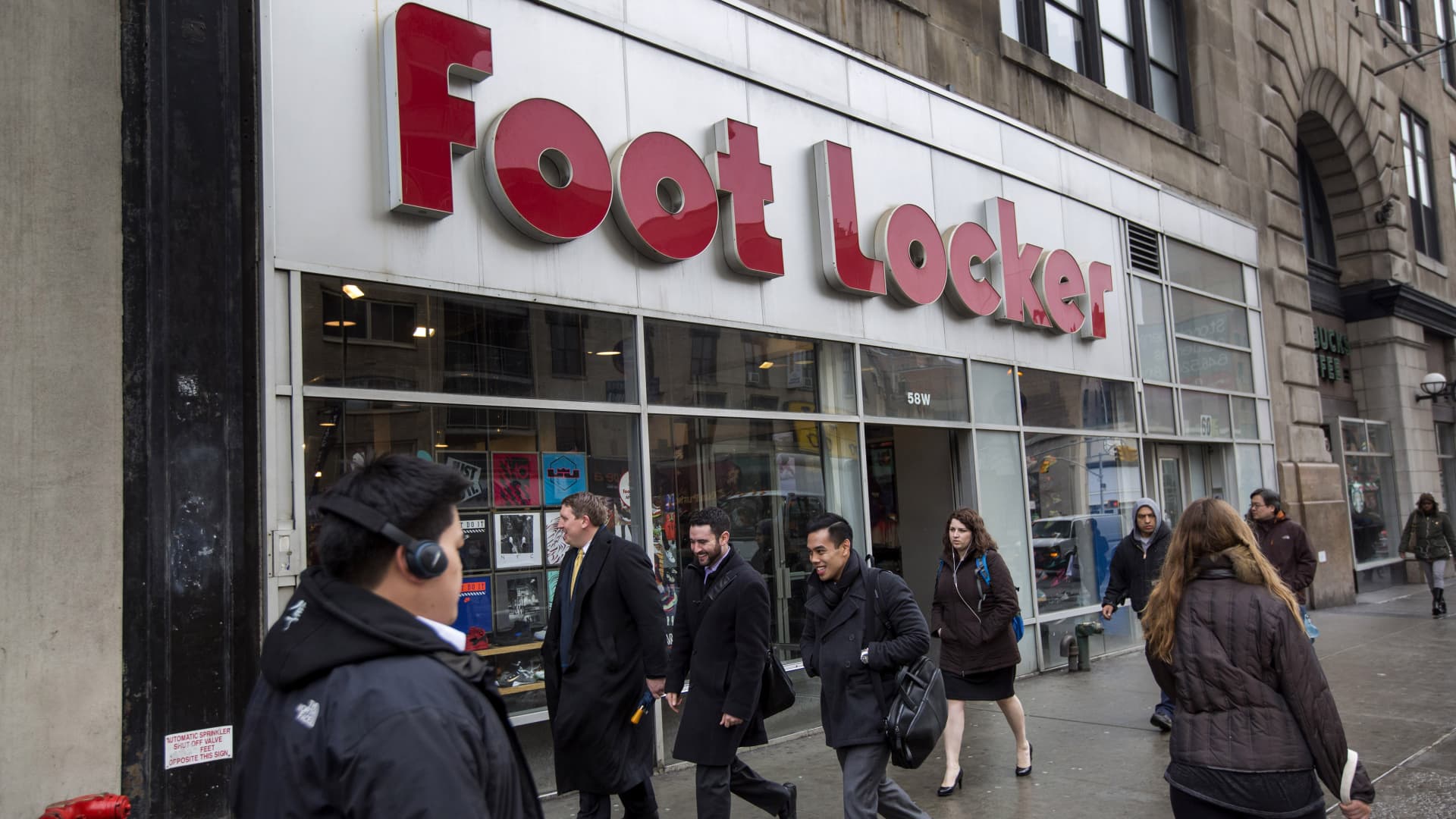Products You May Like
Foot Locker reported another quarter of falling sales and slashed its outlook for the second time this year on Wednesday as inflation-weary consumers think twice before shelling out for footwear and apparel.
The sneaker giant’s adjusted fiscal second-quarter earnings were in line with Wall Street’s expectations, but fell short of analysts estimates on sales and saw another quarter of slimmer margins due to promotions and higher shrink.
Shares plunged 26% in pre-market trading.
Here’s how Foot Locker did in the three-month period that ended July 29 compared with what Wall Street was anticipating, based on a survey of analysts by Refinitiv:
- Earnings per share: 4 cents adjusted vs. 4 cents expected
- Revenue: $1.86 billion vs. $1.88 billion expected
The company swung to a loss of $5 million, or 5 cents per share, compared to a profit of $94 million, or 99 cents a share, a year earlier. Excluding one-time items, the company reported earnings of 4 cents per share.
Sales declined to $1.86 billion, down 9.9% from $2.07 billion a year earlier.
The dismal quarter prompted Foot Locker to lower its forecast again – just five months after introducing it. The company also paused its quarterly cash dividend beyond its board’s recently-approved October payout of 40 cents per share.
The athletic apparel retailer now expects sales to drop 8% to 9% for the year, compared to a previously issued forecast of down 6.5% to 8%. It is projecting a drop in same store sales of 9% to 10%, compared to its previous guidance of down 7.5% to 9%.
The company cut its adjusted earnings guidance to $1.30 to $1.50 per share, down from $2.00 to $2.25 a share.
“We did see a softening in trends in July and are adjusting our 2023 outlook to allow us to best compete for price-sensitive consumers, while still leaning into the strategic investments that drive our Lace Up plan,” CEO Mary Dillon said in a news release.
For the last two quarters, Foot Locker has been forced to rely on promotions to drive sales because its primary customer, which skews lower to middle-income, has pulled back on spending for discretionary goods like shoes and clothes.
Those heavy markdowns have weighed on Foot Locker’s margins, which dropped 4.6 percentage points compared to the year-ago period.
Shrink, a retail industry term that refers to merchandise lost by theft, damage or other means, also weighed on profits, Foot Locker said. It didn’t disclose how much shrink cut into its margins compared to promotions.
Comparable-store sales dropped by 9.4% during the quarter, which the retailer attributed to “ongoing consumer softness” and changes to its vendor mix. It’s unclear which vendors, or athletic apparel brands, are changing. But Foot Locker has been trying to reduce its reliance on Nike and balance its vendor mix.
Nike, which has long been the largest driver of sales at Foot Locker, has been in the midst of its own strategy shift towards a direct-to-consumer model and has been pulling back from wholesalers for several years.
Foot Locker’s inventories are still high – they rose 11% year over year to $1.8 billion – but levels have sequentially improved compared to the first quarter of 2023, the company said.
